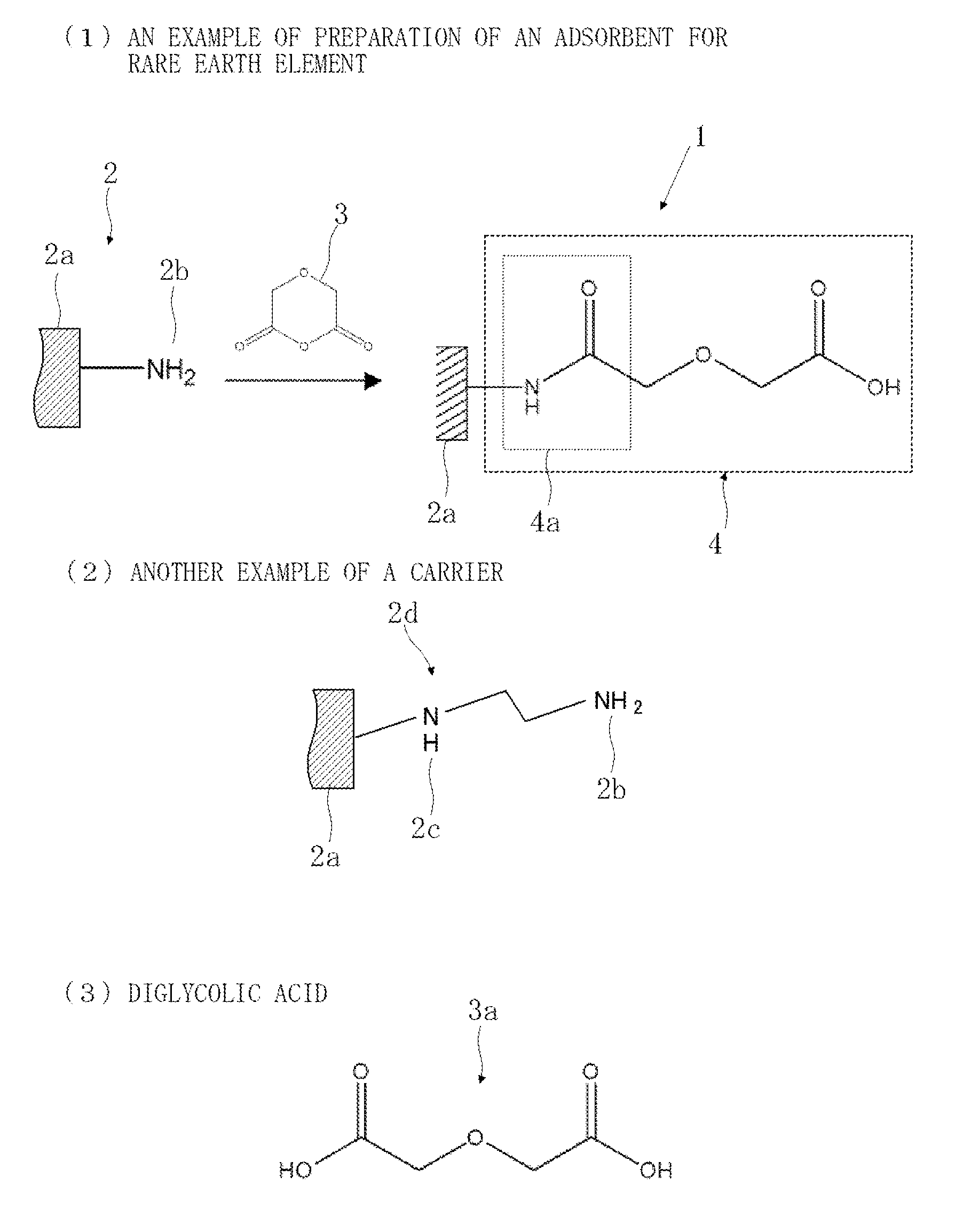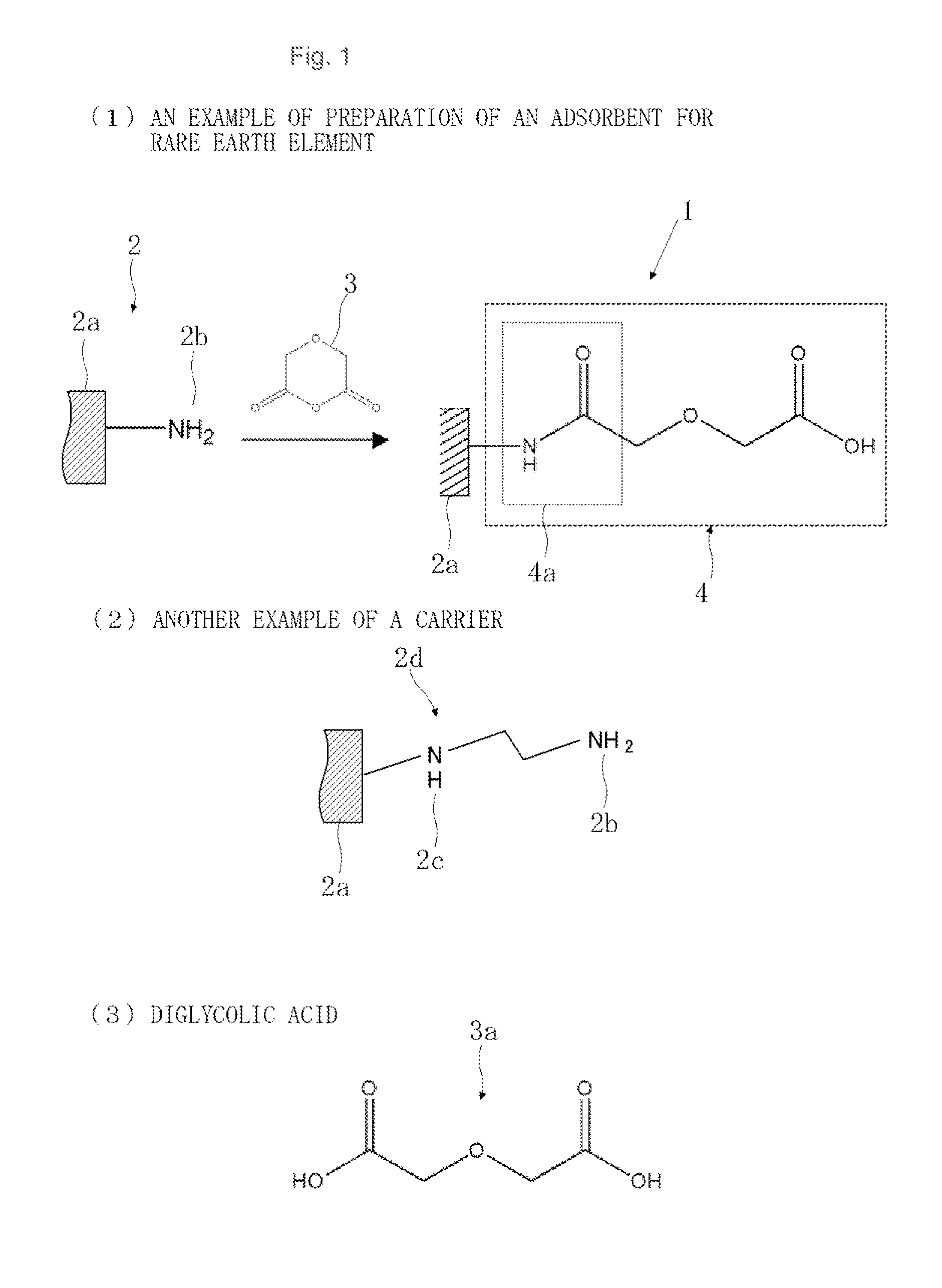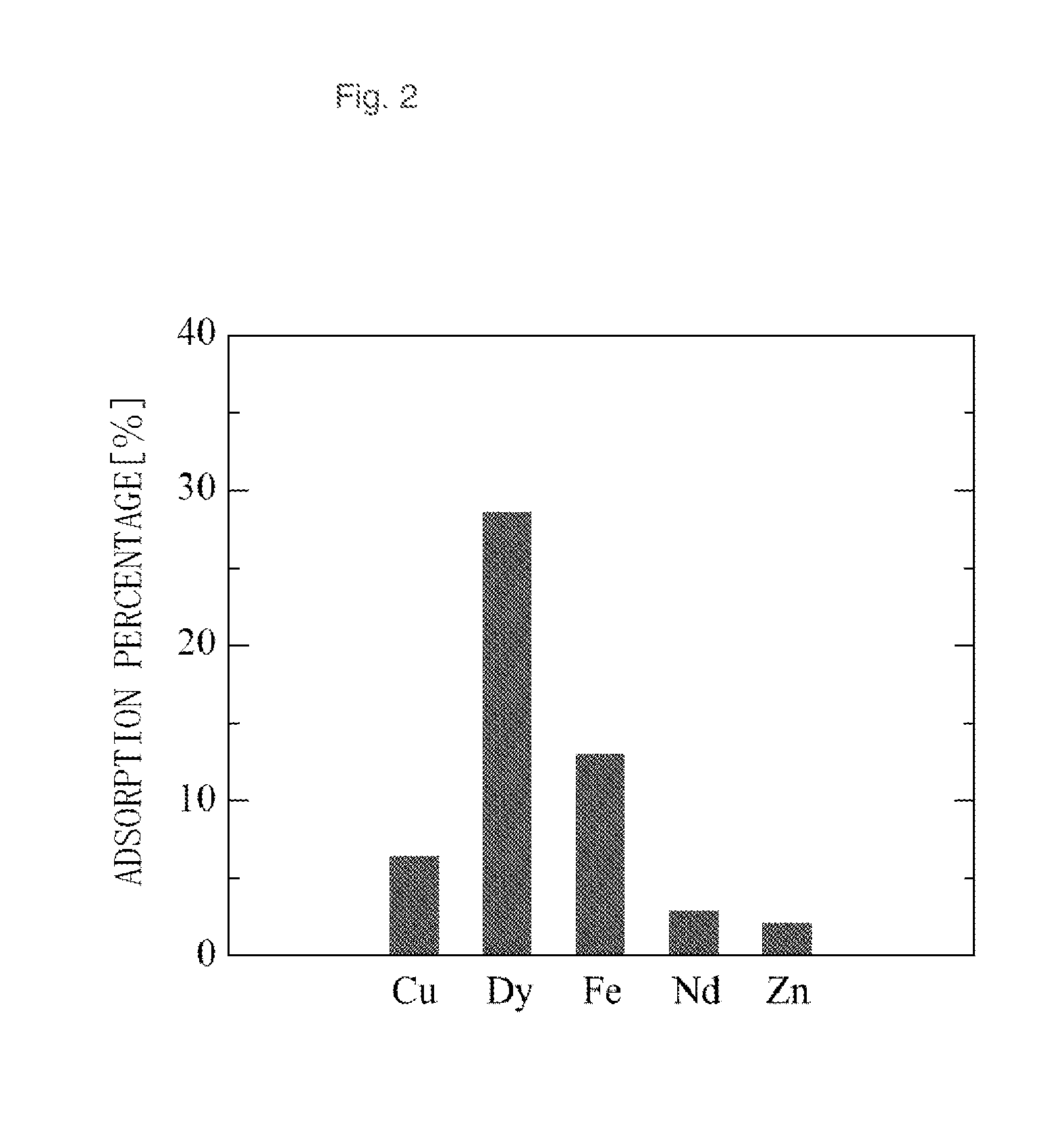Adsorbent for rare earth element and method for recovering rare earth element
- Summary
- Abstract
- Description
- Claims
- Application Information
AI Technical Summary
Benefits of technology
Problems solved by technology
Method used
Image
Examples
example 1
Preparation of Adsorbent A
[0063]To a solution in which polyethyleneimine was dissolved in methanol, was added silica gel to impregnate the silica gel with polyethyleneimine, and the resulting reaction product was filtered, sufficiently washed with methanol and water, and dried under reduced pressure.
[0064]Next, the polyethyleneimine-impregnated silica gel was added to a glutaraldehyde aqueous solution to crosslink the polyethyleneimine in the silica gel, and the resulting reaction product was filtered, sufficiently washed with water, and dried under reduced pressure.
[0065]Next, the polyethyleneimine-impregnated silica gel (carrier) crosslinked with glutaraldehyde was added to a diglycolic anhydride-ethanol solution and allowed to react with each other at 25° C. for 3 days. The resulting reaction product was filtered, sufficiently washed with ethanol and water, and dried under reduced pressure to obtain an adsorbent A.
[Adsorption Test of Adsorbent A]
[0066]To 5 ml of an aqueous soluti...
example 2
Preparation of Adsorbent B
[0068]A commercially available chelating resin, DIAION CR20 (a polyamine type, manufactured by Mitsubishi Chemical Corporation) (carrier) was added to a solution of diglycolic anhydride in ethanol and allowed to react with each other at 25° C. for 3 days. The resulting reaction product was filtered, sufficiently washed with ethanol and water, and dried under reduced pressure to obtain an adsorbent B.
[Adsorption Test of Adsorbent B]
[0069]To 5 ml of an aqueous solution for adsorption test containing 100 ppm each of dysprosium (Dy) and neodymium (Nd) as rare earth elements and 100 ppm each of iron, copper, and zinc as base metals, was added 50 mg of the adsorbent B, and the mixture was subjected to adsorption test at 25° C. with shaking.
[0070]After the lapse of a predetermined period of time, the solution was collected, and the adsorption percentage (%) of metal ions on the adsorbent was calculated in the same manner as in Example 1. The results are shown in F...
example 3
Preparation of Adsorbent C
[0072]A commercially available amino-silica gel, 3-Aminopropyl Silica Gel (manufactured by Tokyo Chemical Industry Co., Ltd.) (carrier) was added to a solution of diglycolic anhydride in dichloromethane and allowed to react with each other at 25° C. for 3 days. The resulting reaction product was filtered, sufficiently washed with dichloromethane, ethanol, and water, and dried under reduced pressure to obtain an adsorbent C.
[Preparation of Adsorbent D, E, and F]
[0073]In the same manner as in the adsorbent C, an adsorbent D was obtained using 3-(Ethylenediamino)propyl Silica Gel (manufactured by Tokyo Chemical Industry Co., Ltd.) as a carrier; an adsorbent E was obtained using 3-(Ethylenediamino)propyl-functionalized silica gel (manufactured by Aldrich Chemical Co.) as a carrier; and an adsorbent F was obtained using 3-(Diethylenetriamino)propyl-functionalized silica gel (manufactured by Aldrich Chemical Co.) as a carrier.
[Adsorption Test of Adsorbents C to F...
PUM
| Property | Measurement | Unit |
|---|---|---|
| Force | aaaaa | aaaaa |
Abstract
Description
Claims
Application Information
 Login to View More
Login to View More - R&D
- Intellectual Property
- Life Sciences
- Materials
- Tech Scout
- Unparalleled Data Quality
- Higher Quality Content
- 60% Fewer Hallucinations
Browse by: Latest US Patents, China's latest patents, Technical Efficacy Thesaurus, Application Domain, Technology Topic, Popular Technical Reports.
© 2025 PatSnap. All rights reserved.Legal|Privacy policy|Modern Slavery Act Transparency Statement|Sitemap|About US| Contact US: help@patsnap.com



